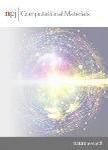Quantifying defects in thin films using machine vision
作者机构:Department of ChemistryThe University of British Columbia2036 Main MallVancouverBC V6T 1Z1Canada Stewart Blusson Quantum Matter InstituteThe University of British Columbia2355 East MallVancouverBC V6T 1Z4Canada Department of Chemical&Biological EngineeringThe University of British Columbia2360 East MallVancouverBC V6T 1Z3Canada Canadian Institute for Advanced Research(CIFAR)MaRS Innovation Centre661 University Ave.Suite 505TorontoON M5G 1M1Canada
出 版 物:《npj Computational Materials》 (计算材料学(英文))
年 卷 期:2020年第6卷第1期
页 面:737-742页
核心收录:
学科分类:08[工学] 0805[工学-材料科学与工程(可授工学、理学学位)] 080502[工学-材料学]
基 金:The authors thank Natural Resources Canada(EIP2-MAT-001)for their financial support.C.P.B.is grateful to the Canadian Natural Sciences and Engineering Research Council(RGPIN 337345-13) Canadian Foundation for Innovation(229288) Canadian Institute for Advanced Research(BSE-BERL-162173) Canada Research Chairs for financial support
摘 要:The sensitivity of thin-film materials and devices to defects motivates extensive research into the optimization of film *** research could be accelerated by automated experiments that characterize the response of film morphology to synthesis *** imaging can resolve morphological defects in thin films and is readily integrated into automated experiments but the large volumes of images produced by such systems require automated *** approaches to automatically analyzing film morphologies in optical images require application-specific customization by software experts and are not robust to changes in image content or imaging ***,we present a versatile convolutional neural network(CNN)for thin-film image analysis which can identify and quantify the extent of a variety of defects and is applicable to multiple materials and imaging *** CNN is readily adapted to new thin-film image analysis tasks and will facilitate the use of imaging in automated thin-film research systems.



